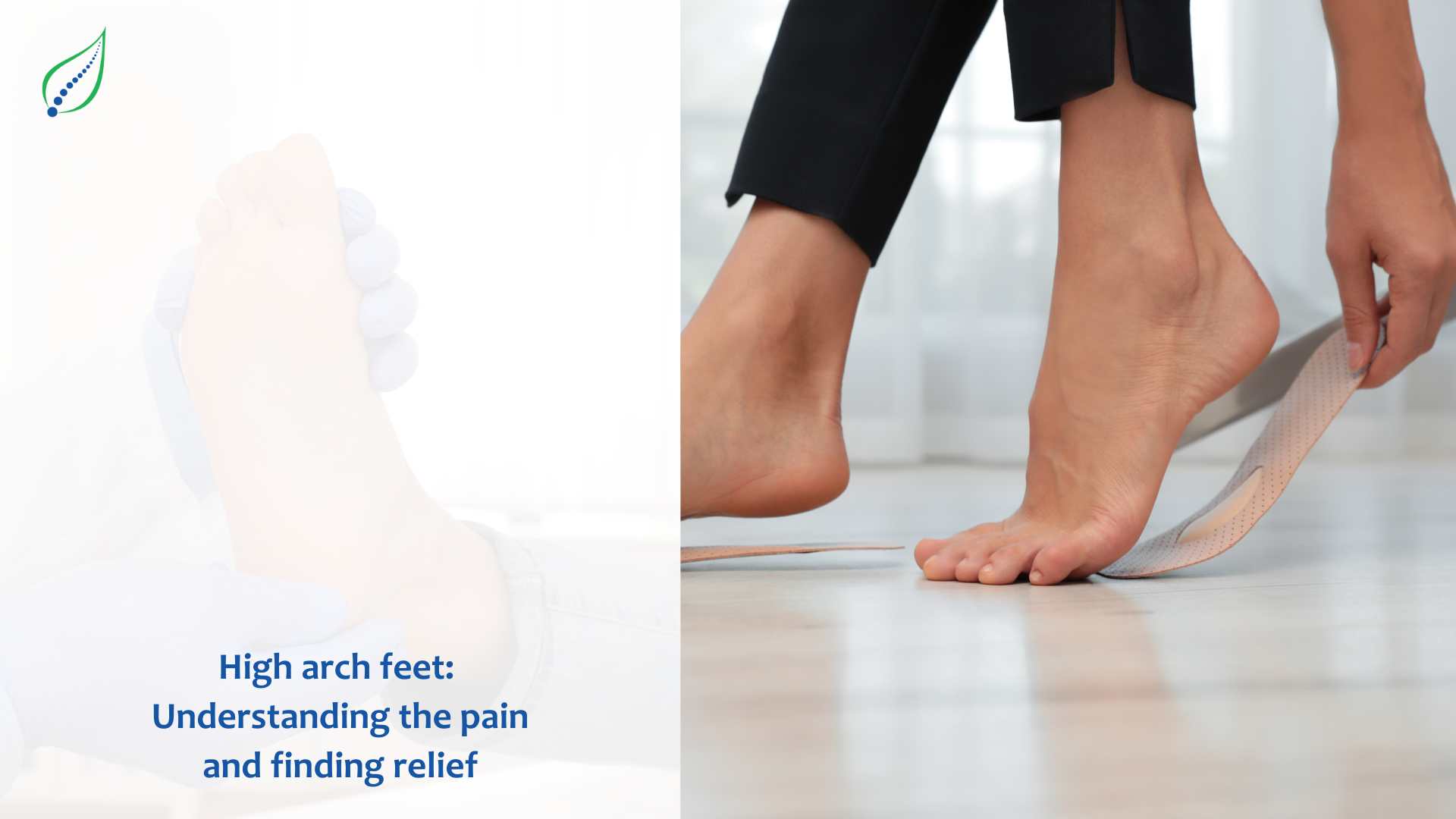High Arch Feet: Understanding the Pain and Finding Relief
When it comes to issues with the feet, high arch feet is a foot problem known as cavus foot deformity that can cause significant discomfort and pain for many individuals. This condition is seen in around 20% of people and it could lead to various problems ranging from slight uneasiness to constant pain or even structural changes within the affected person's foot. In this blog post we will study why high arches cause heel and foot pains, along with different ways to manage them for those who suffer from it.
The Anatomy of High Arch Feet
First, let's understand what high arch feet mean. High arch feet are identified by a deeply raised arch between the heel and ball of your foot. This elevated area forms a unique footprint where only the back part of your foot along with the front part touch ground while leaving behind very little to no imprint in the middle section.
Not all high arches are from birth, as some can be developed due to reasons like underlying neurological or muscular conditions such as spina bifida, muscle wasting disease (muscular dystrophy) and Charcot-Marie-Tooth disease. Whatever the cause may be for these cases of high arches in feet that are not hereditary, it is clear how an altered foot structure could set off a series of problems ending up in pain and discomfort.
How High Arches Lead to Heel and Foot Pain
The high arch in the cavus foot causes a disproportionate distribution of weight and pressure on the foot. This imbalance can show itself in various manners:
- More Pressure Points: When you have high arches, your body weight gets concentrated on the heel and ball of your foot. This results in increased pressure in these spots which can cause painful corns or calluses to form there.
- Plantar Fasciitis: The ligament known as plantar fascia, which links heel with toes, might experience inflammation due to the changed foot mechanics. Normally this leads to sharp pain in the heel especially when you take initial steps after resting.
- Metatarsalgia: When there is too much pressure on the ball of your foot, it can lead to swelling and pain in this spot - a situation called metatarsalgia. Usually, the discomfort becomes worse if you stand or walk for an extended period of time.
- Ankle Weakness: A higher arch may affect the strength of your ankle, boosting chances for sprains and causing ongoing pain in this area.
- Stress Fractures: When someone's foot is under constant stress, it may result in tiny cracks known as hairline fractures within the metatarsal bones. This can cause ongoing pain and trouble walking or using the foot.
Identifying High Arch Feet and Associated Pain
Firstly, identifying the high arch feet is essential for dealing with the pain that comes along. Apart from the particular footprint shape, people having high arches might observe:
- Difficulty finding shoes that fit comfortably
- An inward-tilting heel when standing
- Bent or claw-like toes
- Pain when walking, standing, or engaging in sports activities
In case you have a feeling that your feet are high arched and there is ongoing pain, it becomes very important to consult with a healthcare provider. They can do extensive examinations, which might involve X-rays or MRI scans to evaluate the seriousness of your condition and eliminate any hidden reasons behind it.
Managing Pain from High Arch Feet
Happily, there are many ways to deal with pain from high arch feet. The best treatment for you will depend on how bad your condition is and what symptoms you have.
Orthotics and Proper Footwear
Another method which is very useful for decreasing pain from high arches involves the use of orthotics. These are special inserts put into shoes to give extra cushioning and assist in distributing pressure on the foot more evenly. Orthotics that can be bought without a prescription might help, but those custom-made ones usually work better. You need to get these from an expert in orthopedics.
The second thing to consider is footwear. Shoes that have strong arch support and cushioning can help a lot in reducing pain and stopping any more problems.
Physical Therapy and Stretching
Exercises that are aimed at bettering flexibility and strength in the feet and ankles could assist with reducing pain and enhancing overall foot function. A physical therapist may create an individualized plan to deal with distinct issues tied to high arches.
Pain Management Techniques
To decrease swelling and discomfort, you may put ice on the arches of the feet for roughly 10 minutes every few hours. Likewise, over-the-counter painkillers like non-steroidal anti-inflammatory drugs (NSAIDs) can help with immediate relief.
You might get advised to use night splints. These are special devices that stretch your arches and calf muscles while you sleep. It can help a lot if plantar fasciitis is causing discomfort for you in mornings or after periods of rest because they work on keeping tissues stretched out during this time too!
Final Words
If you have high arch feet, they can cause considerable pain in your heels and feet. However, learning about the condition and trying out different treatments might help manage this pain better while also enhancing overall life quality. If you constantly suffer from foot ache or suspect having high arches, do not delay in getting medical assistance. By using correct methods, it is possible to work towards reducing discomfort and keeping feet healthy as well as comfortable.

_1742973131.png)
_1742634080.png)

